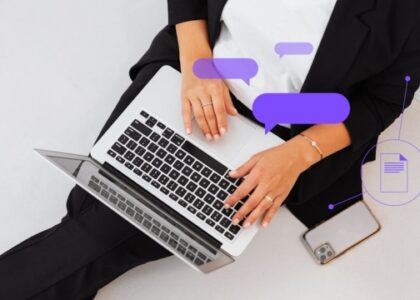Are you ready to discover the secret to breathing freely in your living spaces? Look no further than the incredible power of ventilation blocks! These innovative concrete pavers, also known as CMUs (concrete masonry units), have revolutionized the world of construction by seamlessly integrating both functionality and aesthetics. With their unique design, ventilation blocks allow for the free flow of air while maintaining the structural integrity of your buildings.
Imagine strolling along a beautifully designed walkway, surrounded by elegantly crafted railing systems and adorned with precast concrete civil products. Now add the perfect touch of practicality with strategically placed ventilation blocks. Not only do they enhance the overall appearance of your exteriors, but they also fulfill the crucial role of ensuring proper air circulation, creating a healthier and more comfortable environment for all.
But the benefits of ventilation blocks don’t stop there! These versatile units have found their place in various other construction applications. From retaining wall systems that offer both strength and style, to drain covers that effectively manage water drainage, ventilation blocks prove to be invaluable assets across different project types. Embrace the power of ventilation blocks and unlock a world of possibilities for your next construction venture!
Benefits of Ventilation Blocks
Ventilation blocks, also known as concrete pavers or CMUs, offer a multitude of advantages in various construction projects. These innovative building materials provide exceptional functionality, durability, and flexibility, making them a popular choice for a wide range of applications. Whether it’s for railing systems, precast concrete civil products, retaining wall systems, or drain covers, ventilation blocks offer several key benefits.
Firstly, ventilation blocks allow for efficient air circulation and natural ventilation within structures. Their unique design allows air to flow freely, enhancing indoor air quality and preventing the buildup of harmful pollutants. This is particularly beneficial in spaces such as basements, underground parking lots, or utility rooms, where adequate air circulation is crucial.
Secondly, ventilation blocks are highly durable and long-lasting. Made from high-quality concrete, these blocks can withstand heavy loads, extreme weather conditions, and even impact. This robustness ensures their longevity, reducing the need for frequent replacements or repairs, thus saving both time and money in the long run.
Lastly, ventilation blocks offer tremendous flexibility in terms of design and application. With a wide range of shapes, sizes, and styles available, they can be seamlessly integrated into various architectural plans. Whether it’s for a modern, industrial look or a more traditional aesthetic, ventilation blocks provide ample creative possibilities for designers and architects.
In conclusion, ventilation blocks provide a range of benefits that make them a valuable addition to any construction project. From improving indoor air quality to ensuring durability and flexibility, these versatile building materials offer a practical and cost-effective solution for a range of applications.
Applications of Concrete Pavers
Concrete pavers, also known as ventilation blocks, are versatile building materials that can be used in various applications. Their durability and strength make them ideal for both residential and commercial projects. Here are some common applications of concrete pavers:
-
Landscaping: Concrete pavers can transform outdoor spaces into beautiful and functional areas. They can be used to create pathways, patios, and driveways. With their wide range of colors, shapes, and sizes, concrete pavers offer endless design possibilities, allowing homeowners to personalize their outdoor areas.
-
Road construction: Concrete pavers are widely used in the construction of roads and pavements. Their interlocking design provides stability and prevents shifting and cracking over time. Concrete pavers can withstand heavy loads and are resistant to oil and fuel spills, making them a reliable choice for roadways that experience high traffic volumes.
-
Industrial applications: Concrete pavers are commonly used in industrial settings such as warehouses, factories, and loading docks. Their strength and durability make them suitable for areas that require frequent movement of heavy equipment and vehicles. Concrete pavers can withstand the constant wear and tear, ensuring a long-lasting and low-maintenance flooring solution.
In conclusion, concrete pavers have a wide range of applications, including landscaping, road construction, and industrial settings. Their versatility, durability, and aesthetic appeal make them a popular choice for various projects. Whether it’s creating a beautiful outdoor space or constructing a reliable roadway, concrete pavers offer a practical and cost-effective solution.
Importance of Retaining Wall Systems
Retaining wall systems play a crucial role in various construction projects, providing stability and support to different structures. These systems are designed to prevent soil erosion, manage water drainage, and create level areas in landscapes.
One significant benefit of retaining wall systems is their ability to control the flow of water. By strategically incorporating these walls into the landscape, excess water runoff can be redirected and managed effectively. This helps in preventing soil erosion, which can be detrimental to the stability and integrity of surrounding structures.
Furthermore, retaining wall systems are instrumental in creating level areas in landscapes that may otherwise be sloping or uneven. This can be particularly useful in hilly terrains or areas with varying elevations. By leveraging such systems, landscapers and builders can transform challenging landscapes into usable areas.
In addition to their functional benefits, retaining wall systems also offer aesthetic value. These walls can be constructed using various materials such as concrete pavers, CMUs, or precast concrete civil products, allowing for attractive design possibilities. With the right selection and arrangement of materials, retaining walls can integrate seamlessly with surrounding structures, enhancing the overall visual appeal of the landscape.
With their ability to prevent soil erosion, manage water drainage, create level areas, and contribute to the aesthetic aspects of a construction project, retaining wall systems are a vital component in the world of civil engineering and landscaping. By understanding their importance and harnessing their power, builders and designers can breathe freely, knowing that their structures are supported by these reliable and versatile systems.







